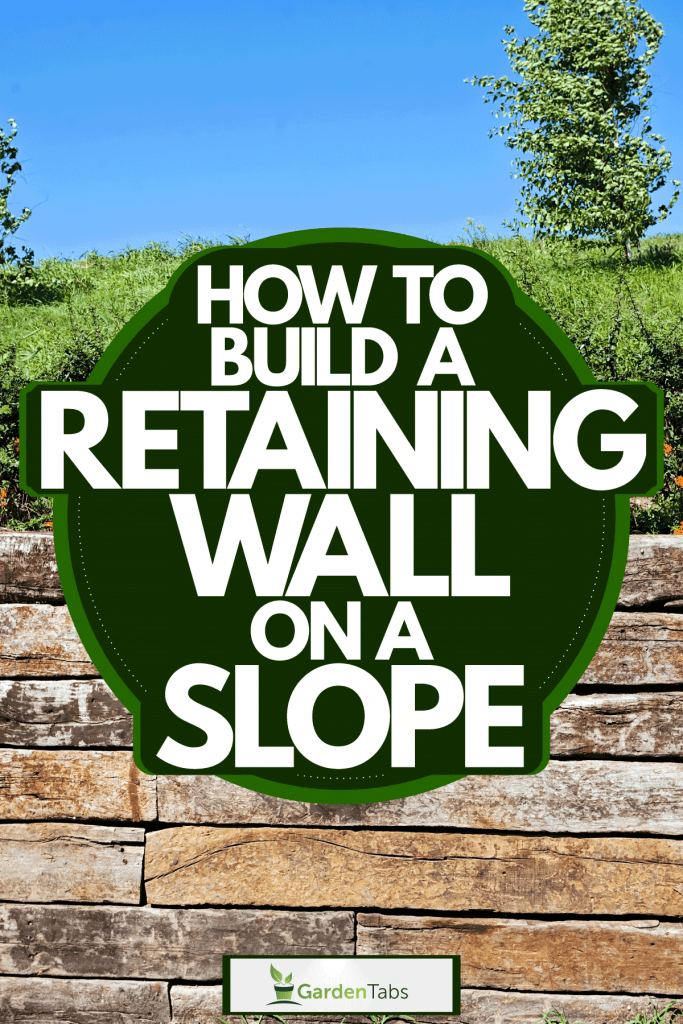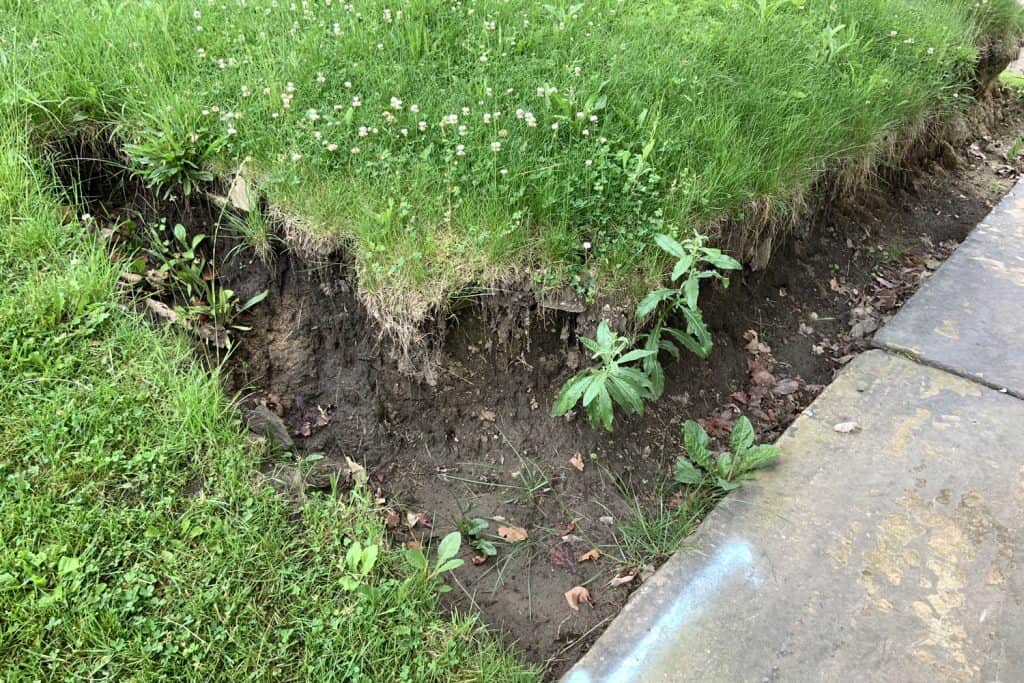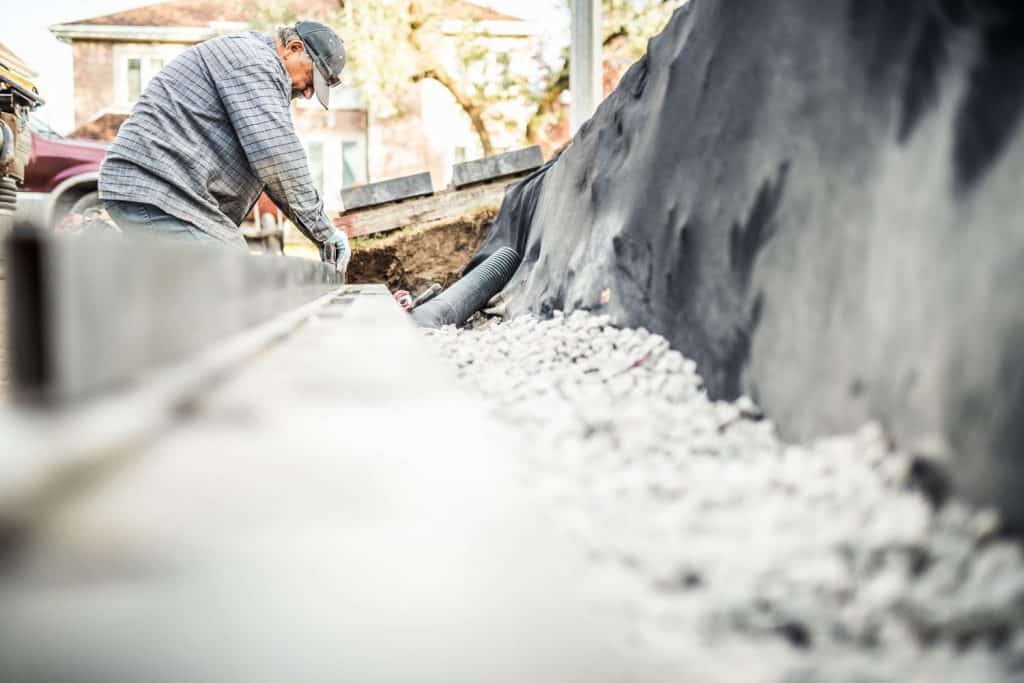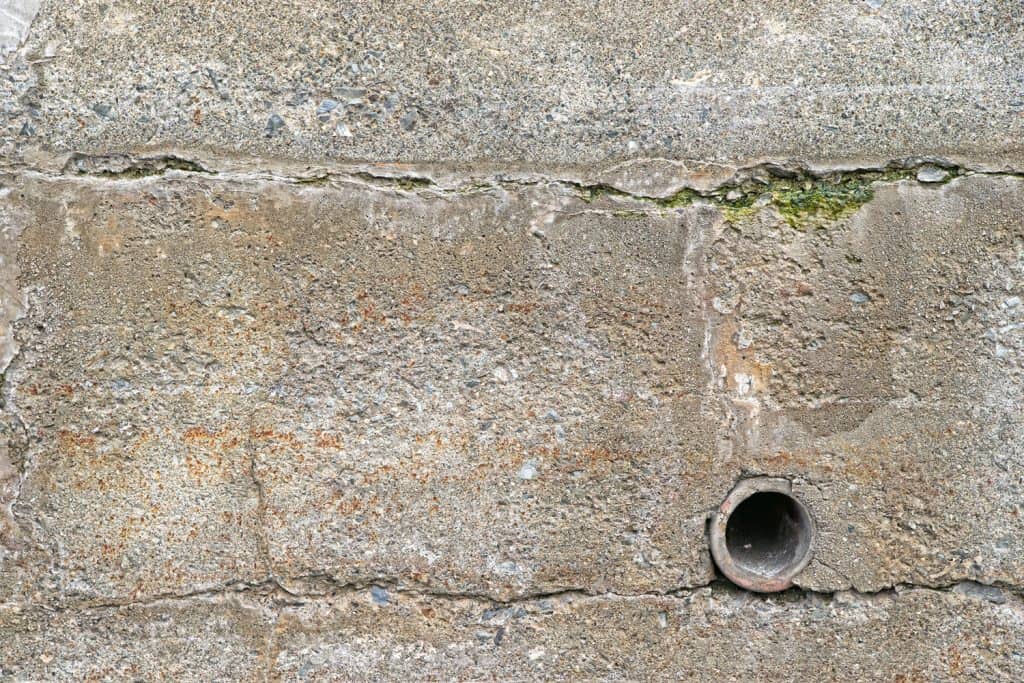How To Build A Garden Wall On A Slope
We may get commissions for purchases made through links in this post.
Retaining walls add an attractive element to any landscape. These walls may prevent floods and decrease soil erosion. There are many other benefits alongside these when it comes to retaining walls. It makes sense that you are planning for one. What if the land you are working with is on a slope? This may change a few things with planning, but it can be done. We've gathered our research and created this step-by-step guide to show you how to build your retaining wall on a slope.
To build a retaining wall on a slope, follow these steps:
- Dig a stepped trench
- Gravel base
- Install the first row of blocks
- Rough gravel
- Install remaining block layers
- Secure top row blocks
- Backfill
Now you know the basic steps to building your wall. We will explain each step in detail and highlight which steps are vital for slopped landscapes. Keep reading as we dive into this and more.

How To Build A Retaining Wall
These steps will demonstrate how to build a retaining wall using interlocking blocks. To get started, you will need to gather a list of tools, safety equipment, and building materials: use eye protection and gloves for this DIY project. Any building project should have safety as a high priority.
Now that you have all your materials gathered let's take a closer look at the steps to building your wall.
1. Dig a Stepped Trench
Start by marking a line to follow on the ground. This line gives you a guide to follow when digging your trench, and it does not need to be perfect. You want to dig your trench about twice as wide as the depth of your blocks. The trench needs to be deep enough to allow for 6 inches of gravel material and half the height of your blocks.

When you are working with a sloped landscape, you need to dig a stepped trench. These steps allow for leveled rows of blocks on a sloped landscape.
2. Gravel Base
Once you have dug your stepped trench, you will begin to lay your foundation of packed gravel. The foundation should consist of 6 inches of leveled and packed gravel.

When building on a slope or a hill, you will fill your gravel base by row. Lay your gravel base, install your first row of blocks, then move onto the next step in your trench.
3. Install First Row Of Blocks
Install your first row of blocks on top of your packed gravel base. Lay one block at a time, leveling all sides before moving onto the next block. This row must be done right, as it is the foundation of your wall. You cannot go back to fix these blocks.

You can purchase a Torpedo level here on Amazon.
Reminder: With a sloped retaining wall, you need to lay your gravel and the first layer of blocks step by row in your stepped trench.
4. Rough Gravel
With your first row of blocks set and leveled, you will notice space between your trench wall and your blocks. This space will be filled with rough gravel for drainage. This gravel will be loose compared to your gravel base.
Image

Use dirt to fill the space in front of your first row of blocks. The dirt in front and the gravel behind work together to keep your blocks in place.
5. Install Remaining Block Layers
The foundation layers are the most challenging. With these layers set, you can install the remaining layers of blocks. Add one block at a time, staggering the seams. Make sure there is a snug fit between blocks and no rocks or dirt between layers.

Keep adding drainage gravel behind your rows of blocks as you go.
6. Secure Top Row Blocks
Your top row of blocks will be secured using construction adhesive. Flip each block in the top layer, apply your adhesive, and set the block back down. Do not let dirt or rocks get in between.

You can find construction adhesive here on Amazon.
7. Backfill
After your final row is laid and sealed, you will fill the gap behind these blocks. This time, you will use soil instead of your drainage gravel. You should be left with a clean look, ready to grow grass and other plants.
The video below provides these steps in a detailed video, including some extra tips and tricks.
How Do You Build A Retaining Wall On A Sloped Yard?
By using the steps provided, you can build a retaining wall on a sloped yard. There are key points to pay special attention to when working on a slope.
When digging your trench, you must create a stepped trench when building in a sloped yard. This step will save you from digging deeper higher in your slope while keeping your blocks level.
When you are layering your foundation gravel and the first layer of blocks, you will complete these steps in one section of your trench before moving up the steps. The block at each step-up must be completely buried.
Watch the video below for a visual of a stepped trench.
Read more in this blog post: How To Integrate A Vertical Garden Into A Retaining Wall
How Deep Should A Trench Be For A Retaining Wall?
Your trench needs to be deep enough to house 4-6 inches of gravel base and cover at least 1/2 the height of your block. The exact depth of the trench does vary based on what size blocks you are using and how high you plan to build.
A good rule of thumb to follow is that your trench should be deep enough for your gravel base plus 1 inch for every 8 inches of wall height you planned for.

Read more in this blog post: 23 Vertical Gardening Tips That Will Take Your Green Wall To The Next Level
Which Blocks To Use For A Retaining Wall?
There are several retaining wall blocks to go through. Which blocks are best? Think about how big you plan to build your wall, as this can help you decide.

If you plan for a larger wall up to 3 feet high, consider using large concrete garden wall blocks. These blocks are on the cheaper side and easy to work with. Maybe you are planning for a shorter wall. If your wall is under 2 feet high, Pavestones are a great option. These lightweight stones are easy to move and can be found in just about any home improvement shop.

How Many Blocks Do I Need For A Retaining Wall?
To make things easier, many companies have created retaining wall block calculators. These calculators will do the work for you when figuring how many blocks you will need for your project, but you need some information. Decide on an ideal height and length of your wall, and have the dimensions of the blocks you intend to use. Plug these numbers in and let the calculator do the rest.
Do All Retaining Walls Need Drainage?
All retaining walls need drainage. The involvement of drainage depends on the material of the wall blocks. If you have a short wall with natural joints for water to drain, the rough gravel placed behind the rows of blocks should be enough to keep water flowing.

Blocks that are not porous whatsoever, not allowing any water flow, will need a little help. When building a wall with these blocks, you will need to include a drainage system in your plans, no matter the wall height.
What Is The Strongest Type Of Retaining Wall?
Retaining walls have been made from various materials, including stone, timber, concrete, and brick. Which building material will be the strongest, leaving you with a sturdy, long-lasting wall?
The strongest type of retaining wall is concrete or stone. These materials are durable, strong, and the best option to support your landscape.
Concluding Thoughts
These are the steps you need to build a retaining wall in your yard. This method can be used on flat ground or a slope. Keep those key points in mind when building on a slope or hill. Remember that your stepped trench and foundation layers are the most important and difficult steps in building. No matter the difficulty, when you have a finished retaining wall as part of your landscape, you will feel that it was worth it. We hope you found this article helpful when it comes to building a wall of your own.
Looking for more wall ideas? Have a look at this blog post: How To Create A Vertical Grass Wall (7 Easy Steps)
How To Build A Garden Wall On A Slope
Source: https://gardentabs.com/building-retaining-wall-on-slope/
Posted by: howletthanceseles1941.blogspot.com

0 Response to "How To Build A Garden Wall On A Slope"
Post a Comment